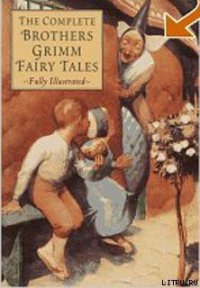Celtic Fairy Tales - Jacobs Joseph (лучшие книги читать онлайн txt) 📗
XVIII. LEGEND OF KNOCKMANY.
Source.–W. Carleton, Traits and Stories of the Irish Peasantry.
Parallels.–Kennedy’s “Fion MacCuil and the Scotch Giant," Legend. Fict., 203-5.
Remarks.–Though the venerable names of Finn and Cucullin (Cuchulain) are attached to the heroes of this story, this is probably only to give an extrinsic interest to it. The two heroes could not have come together in any early form of their sagas, since Cuchulain’s reputed date is of the first, Finn’s of the third century A.D. (cf. however, MacDougall’s Tales, notes, 272). Besides, the grotesque form of the legend is enough to remove it from the region of the hero-tale. On the other hand, there is a distinct reference to Finn’s wisdom-tooth, which presaged the future to him (on this see Revue Celtique, v. 201, Joyce, Old Celt. Rom., 434-5, and MacDougall, l.c. 274). Cucullin’s power-finger is another instance of the life-index or external soul, on which see remarks on Sea-Maiden. Mr. Nutt informs me that parodies of the Irish sagas occur as early as the sixteenth century, and the present tale may be regarded as a specimen.
XIX. FAIR, BROWN, AND TREMBLING.
Source.–Curtin, Myths, &c., of Ireland, 78 seq.
Parallels.–The latter half resembles the second part of the Sea-Maiden (No. xvii.), which see. The earlier portion is a Cinderella tale (on which see the late Mr. Ralston’s article in Nineteenth Century, Nov. 1879, and Mr. Lang’s treatment in his Perrault). Miss Roalfe Cox is about to publish for the Folk-Lore Society a whole volume of variants of the Cinderella group of stories, which are remarkably well represented in these isles, nearly a dozen different versions being known in England, Ireland, and Scotland.
XX. JACK AND HIS MASTER.
Source.–Kennedy, Fireside Stories of Ireland, 74-80, "Shan an Omadhan and his Master.”
Parallels.–It occurs also in Campbell, No. xlv., “Mac a Rusgaich.” It is a European droll, the wide occurrence of which– "the loss of temper bet” I should call it–is bibliographised by M. Cosquin, l.c. ii. 50 (cf. notes on No. vi.).
XXI. BETH GELLERT.
Source.–I have paraphrased the well-known poem of Hon. W. R. Spencer, “Beth Gelert, or the Grave of the Greyhound,” first printed privately as a broadsheet in 1800 when it was composed ("August 11, 1800, Dolymalynllyn” is the colophon). It was published in Spencer’s Poems, 1811, pp. 78-86. These dates, it will be seen, are of importance. Spencer states in a note: “The story of this ballad is traditionary in a village at the foot of Snowdon where Llewellyn the Great had a house. The Greyhound named Gelert was given him by his father-in-law, King John, in the year 1205, and the place to this day is called Beth-Gelert, or the grave of Gelert.” As a matter of fact, no trace of the tradition in connection with Bedd Gellert can be found before Spencer’s time. It is not mentioned in Leland’s Itinerary, ed. Hearne, v. p. 37 ("Beth Kellarth”), in Pennant’s Tour (1770), ii. 176, or in Bingley’s Tour in Wales (1800). Borrow in his Wild Wales, p. 146, gives the legend, but does not profess to derive it from local tradition.
Parallels.–The only parallel in Celtdom is that noticed by Croker in his third volume, the legend of Partholan who killed his wife’s greyhound from jealousy: this is found sculptured in stone at Ap Brune, co. Limerick. As is well known, and has been elaborately discussed by Mr. Baring-Gould (Curious Myths of the Middle Ages, p. 134 seq.), and Mr. W. A. Clouston (Popular Tales and Fictions, ii. 166, seq.), the story of the man who rashly slew the dog (ichneumon, weasel, &c.) that had saved his babe from death, is one of those which have spread from East to West. It is indeed, as Mr. Clouston points out, still current in India, the land of its birth. There is little doubt that it is originally Buddhistic: the late Prof. S. Beal gave the earliest known version from the Chinese translation of the Vinaya Pitaka in the Academy of Nov. 4, 1882. The conception of an animal sacrificing itself for the sake of others is peculiarly Buddhistic; the “hare in the moon” is an apotheosis of such a piece of self-sacrifice on the part of Buddha (Sasa Jataka). There are two forms that have reached the West, the first being that of an animal saving men at the cost of its own life. I pointed out an early instance of this, quoted by a Rabbi of the second century, in my Fables of Aesop, i. 105. This concludes with a strangely close parallel to Gellert; “They raised a cairn over his grave, and the place is still called The Dog’s Grave.” The Culex attributed to Virgil seems to be another variant of this. The second form of the legend is always told as a moral apologue against precipitate action, and originally occurred in The Fables of Bidpai in its hundred and one forms, all founded on Buddhistic originals (cf. Benfey, Pantschatantra, Einleitung, §201). [Footnote: It occurs in the same chapter as the story of La Perrette, which has been traced, after Benfey, by Prof. M. Muller in his “Migration of Fables” (Sel. Essays, i. 500-74): exactly the same history applies to Gellert.] Thence, according to Benfey, it was inserted in the Book of Sindibad, another collection of Oriental Apologues framed on what may be called the Mrs. Potiphar formula. This came to Europe with the Crusades, and is known in its Western versions as the Seven Sages of Rome. The Gellert story occurs in all the Oriental and Occidental versions; e.g., it is the First Master’s story in Wynkyn de Worde’s (ed. G. L. Gomme, for the Villon Society.) From the Seven Sages it was taken into the particular branch of the Gesta Romanorum current in England and known as the English Gesta, where it occurs as c. xxxii., “Story of Folliculus.” We have thus traced it to England whence it passed to Wales, where I have discovered it as the second apologue of “The Fables of Cattwg the Wise,” in the Iolo MS. published by the Welsh MS. Society, p.561, “The man who killed his Greyhound.” (These Fables, Mr. Nutt informs me, are a pseudonymous production probably of the sixteenth century.) This concludes the literary route of the Legend of Gellert from India to Wales: Buddhistic Vinaya Pitaka–Fables of Bidpai;–Oriental Sindibad;–Occidental Seven Sages of Rome;–"English” (Latin), Gesta Romanorum;–Welsh, Fables of Cattwg.
Remarks.–We have still to connect the legend with Llewelyn and with Bedd Gelert. But first it may be desirable to point out why it is necessary to assume that the legend is a legend and not a fact. The saving of an infant’s life by a dog, and the mistaken slaughter of the dog, are not such an improbable combination as to make it impossible that the same event occurred in many places. But what is impossible, in my opinion, is that such an event should have independently been used in different places as the typical instance of, and warning against, rash action. That the Gellert legend, before it was localised, was used as a moral apologue in Wales is shown by the fact that it occurs among the Fables of Cattwg, which are all of that character. It was also utilised as a proverb: “Yr wy’n edivaru cymmaint a’r Gwr a laddodd ei Vilgi” ("I repent as much as the man who slew his greyhound”). The fable indeed, from this point of view, seems greatly to have attracted the Welsh mind, perhaps as of especial value to a proverbially impetuous temperament. Croker (Fairy Legends of Ireland, vol. iii. p. 165) points out several places where the legend seems to have been localised in place-names–two places, called “Gwal y Vilast" ("Greyhound’s Couch”), in Carmarthen and Glamorganshire; “Llech y Asp” ("Dog’s Stone”), in Cardigan, and another place named in Welsh "Spring of the Greyhound’s Stone.” Mr. Baring-Gould mentions that the legend is told of an ordinary tombstone, with a knight and a greyhound, in Abergavenny Church; while the Fable of Cattwg is told of a man in Abergarwan. So widespread and well known was the legend that it was in Richard III’s time adopted as the national crest. In the Warwick Roll, at the Herald’s Office, after giving separate crests for England, Scotland, and Ireland, that for Wales is given as figured in the margin, and blazoned “on a coronet in a cradle or, a greyhound argent for Walys” (see J. R. Planche, Twelve Designs for the Costume of Shakespeare’s Richard III., 1830, frontispiece). If this Roll is authentic, the popularity of the legend is thrown back into the fifteenth century. It still remains to explain how and when this general legend of rash action was localised and specialised at Bedd Gelert: I believe I have discovered this. There certainly was a local legend about a dog named Gelert at that place; E. Jones, in the first edition of his Musical Relicks of the Welsh Bards, 1784, p. 40, gives the following englyn or epigram:


